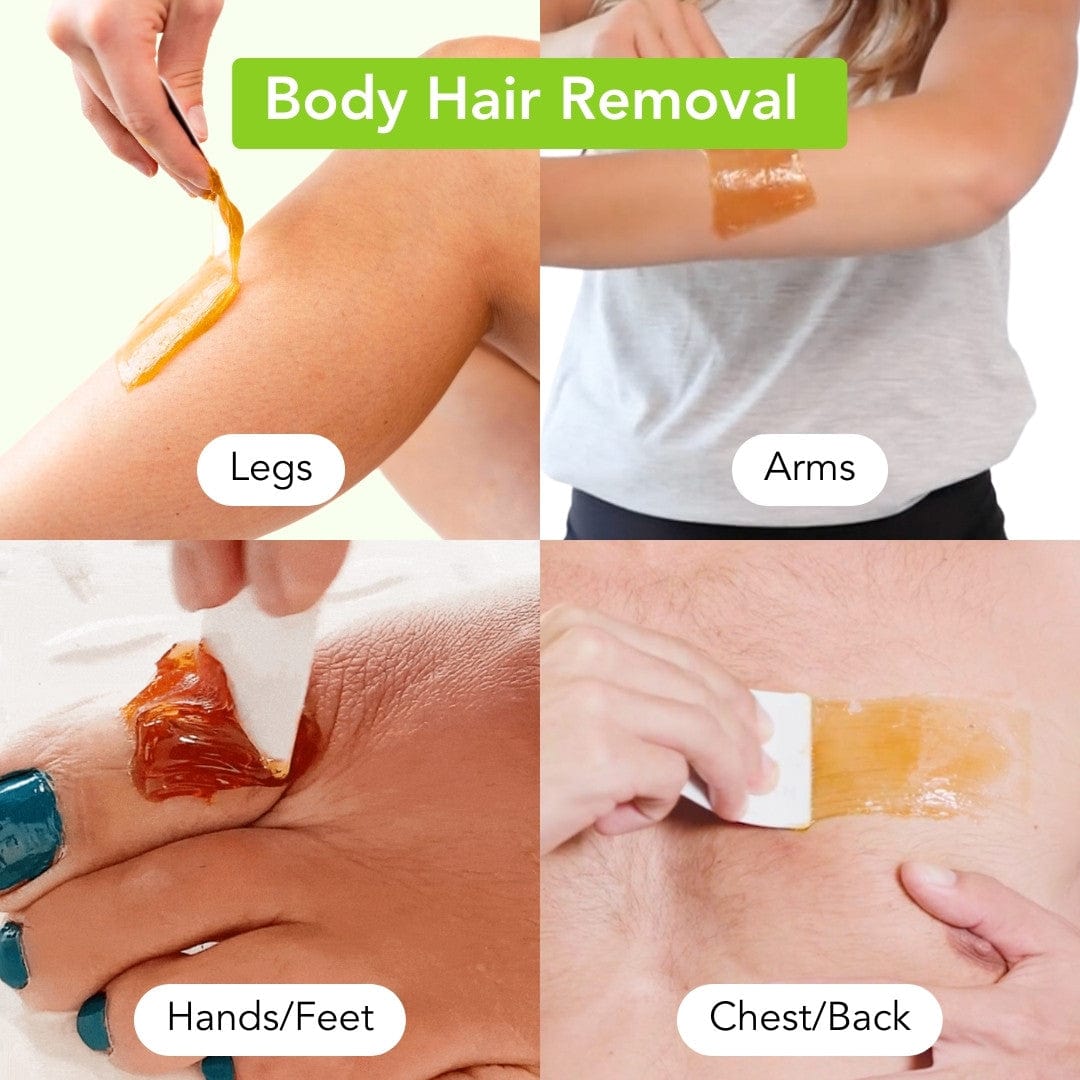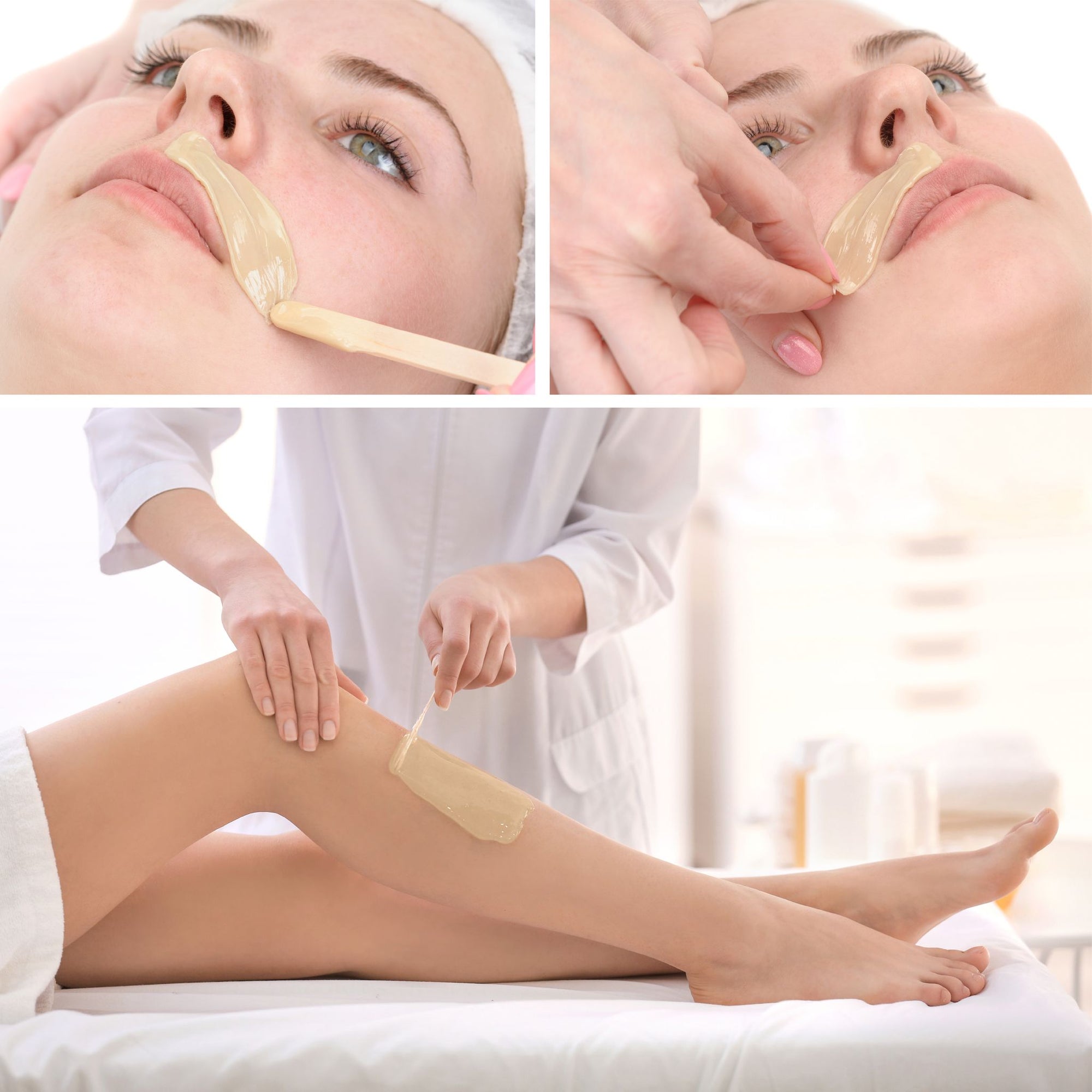Ideal Waxing Salon Near You: Experience the Difference
Ideal Waxing Salon Near You: Experience the Difference
Blog Article
Grasping the Art of Waxing: Necessary Tips for a Painless Hair Removal Experience
In the realm of personal pet grooming, understanding the art of waxing is a skill that can significantly boost one's hair removal experience. The procedure of waxing, though effective in achieving smooth skin, can often be related to pain and discomfort otherwise performed appropriately. By comprehending and executing crucial suggestions, individuals can navigate this hair elimination technique easily and marginal pain. From pre-waxing prep work to selecting the appropriate wax and grasping correct waxing strategies, the journey to a pain-free waxing experience is paved with expertise and competence.
Pre-Waxing Preparation
Before undergoing a waxing session, it is important to properly prepare your skin to decrease pain and attain optimal hair removal results. Beginning by exfoliating your skin a day or 2 prior to your consultation to remove dead skin cells and protect against ingrown hairs. This step aids the wax stick better to the hair, making sure a much more effective removal procedure. Prevent hydrating on the day of your shaving session as it can develop a barrier between the wax and your hair, causing less effective outcomes. In addition, it is recommended to trim your hair to regarding a quarter of an inch prior to waxing to stop unneeded pain during the treatment.
Furthermore, it is essential to cleanse your skin thoroughly prior to waxing to eliminate any type of oils, lotions, or dirt that can disrupt the wax's ability to grasp the hair. This action not just boosts the efficiency of the shaving process but likewise helps in reducing the danger of post-waxing outbreaks - Laser Hair Removal. By complying with these pre-waxing preparation steps, you can make sure a smoother and a lot more comfortable hair removal experience

Choosing the Right Wax
Choosing the suitable kind of wax is crucial for guaranteeing a effective and comfortable hair elimination process. There are several sorts of waxes available, each accommodating various skin types and hair structures. The 2 primary categories of wax are tough wax and soft wax. Hard wax is appropriate for delicate areas like the face, underarms, and swimwear line as it adheres just to the hair, making it much less uncomfortable for these delicate areas. On the other hand, soft wax is perfect for larger locations like legs and arms as it is used very finely and removed with cloth strips.
When choosing a wax, consider your skin sensitivity, hair density, and the area you prepare to wax. Crude hair might need a wax specifically created for strong hair elimination.
Correct Waxing Strategy
To start, it is crucial to clean the skin completely prior to using the wax. Furthermore, constantly make certain that the wax is warmed to the right temperature to prevent burns or inadequate hair removal. Using the wax in the direction of hair development and eliminating it versus the hair development assists to make sure that the hair is drawn from the root, resulting in smoother and longer-lasting outcomes.
Moreover, using tiny areas of wax at a time and pushing strongly on the wax strip before elimination can help boost the efficacy of the procedure. Finally, bear in mind to apply mild pressure on the skin after waxing to soothe any discomfort and minimize redness. By complying with these correct waxing techniques, you can accomplish an extra successful and positive hair elimination experience.
Aftercare Tips

Furthermore, it's recommended to avoid tasks that might create too much sweating, such as extreme workouts, quickly after waxing to prevent further inflammation. Applying a cool compress or aloe vera click here now gel can assist lower inflammation if any redness or bumps linger after waxing. Following these aftercare ideas diligently can make certain a comfortable and reliable waxing experience with resilient outcomes

Troubleshooting Common Issues
Resolving typical problems that might develop during the waxing procedure is essential to ensuring a effective and smooth hair removal experience. One typical problem is skin irritability, which can take place as a result of delicate skin or incorrect shaving techniques. To relieve this, using a soothing lotion consisting of aloe vera or chamomile post-waxing can assist calm the skin. One more concern is ingrown hairs, where hair swirls back or expands sideways into the skin after waxing. Regular peeling with a mild scrub can prevent in-grown hairs by getting rid of dead skin cells and allowing hair to expand openly. Additionally, if you experience bruising or inflammation after waxing, applying a cold compress can minimize swelling and calm the skin. Finally, if you observe unequal hair removal or patches of missed out top article on hair, think about changing your waxing technique or seeking expert aid for even more complex locations. By attending to these typical waxing issues proactively, you can improve the general performance and comfort of your hair elimination routine.
Verdict
To conclude, mastering the art of waxing needs correct prep work, choosing the best wax, using the appropriate method, and complying with aftercare ideas. By complying with these necessary ideas, people can attain a pain-free hair elimination experience. Laser Hair Removal. It is vital to repair common issues that may develop throughout the waxing procedure to make certain a comfortable and successful result. With technique and focus to information, waxing can be a reliable hair removal method.
Furthermore, it is critical to clean your skin thoroughly before waxing to eliminate any kind of oils, creams, visit our website or dirt that can conflict with the wax's ability to grasp the hair. The two primary groups of wax are hard wax and soft wax.When choosing a wax, consider your skin sensitivity, hair thickness, and the area you intend to wax.In addition, making use of little areas of wax at a time and pressing firmly on the wax strip prior to removal can help enhance the effectiveness of the process. After waxing, it's crucial to maintain the waxed area free and clean from irritants.
Report this page